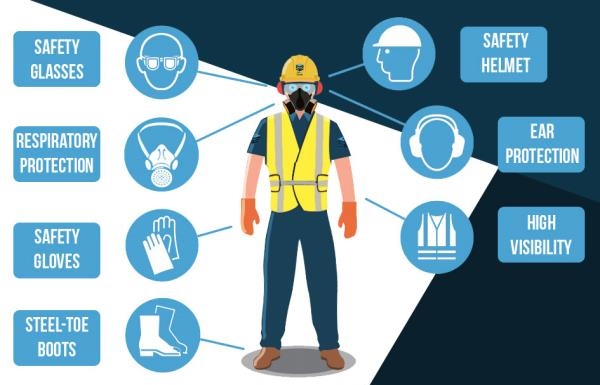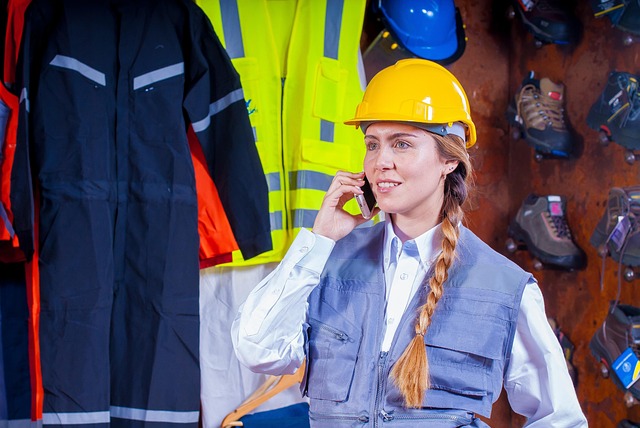Your Ultimate Guide to Protection
Explore unique mining safety helmets, their role in high-risk jobs, and innovations that enhance worker protection underground. Mining is dangerous work. Each year many accidents occur causing significant concern about head injuries among miners. Mining safety helmets function as your main protective element. Miners require these protective helmets because they function as an essential part of their personal protective equipment (PPE). The guide contains complete information about Mining helmets which you require. Acquire skills for selecting ideal safety helmets and discover their care requirements and fundamental safety role in mining environments.
Understanding Hazards in Mining Environments
Mining environments present many dangers. Rocks that fall while maintaining limited space and operating equipment remain available throughout the area. The job site hazards that involve electricity create substantial threats to safety. The protection provided by a suitable mining safety helmet guards against workplace risks.
Common Head Injury Risks in Mining
Mining accidents produce head injuries with varying degrees of gravity from minor to critical. Concussions can cause lasting issues. Skull fractures are life-threatening. Although appearing superficial at first glance the occurrence of lacerations becomes dangerous due to infection risks. The use of mining helmets significantly decreases your chances of sustaining such injuries.
Environmental Hazards Impacting Head Safety
Imagine working in a mine. Rocks may unexpectedly drop down from the surface area above. Cavalier ceilings may lead to your head impacting the structure. Heavy machinery moves constantly. All installations of electrical equipment remain hidden in dimly lit areas. Safety equipment which protects the head must be worn in every one of these environmental exposures.
The Role of Helmets in Mitigating Risks
Helmets act as a barrier. They shield your head from impacts. The protective material in helmets remains unpenetrable against sharp objects. Certain helmets have a built-in protection against electrical shock. Putting on a helmet provides essential protection against accidents. Don’t go underground without it.
Key Features and Standards of Mining Safety Helmets
The mining helmet is something more substantial than its durable exterior. It has several important parts. The device needs to fulfill safety requirements while in operation. The safety standards guarantee the protection equipment delivers what it promises to you.
Essential Components of a Mining Helmet
The shell represents the outermost protective layer which forms the part of the helmet structure. It’s made of tough material. The suspension system sits inside. The helmet suspension works to absorb impact forces which prevents the headpiece from hitting the wearer. The chinstrap functions as a means to secure the helmet on your head particularly during impacts. A face shield functions as an accessory tool to protect eyes from injuries. Ear protection can reduce noise.

Understanding ANSI/ISEA Z89.1 Standard
Performance standards in the ANSI/ISEA Z89.1 specify the quality requirements for helmets. All helmets must demonstrate ability to resist impact forces. Helmets under this standard must show resistance against penetration damage. Electrical insulation protection is mandatory for certain types of protective helmets according to the standard. Select your helmet only from products that display the ANSI/ISEA Z89.1 standard.
Additional Certifications and Standards
Other certifications exist too. CSA is common in Canada. The EN standards serve as the regulatory standards throughout the European region. Each has slightly different requirements. All helmet safety certifications share the common purpose of achieving helmet safety. Ensure your helmet fulfills the safety regulations valid for your region.
Selecting the Right Mining Safety Helmet
The selection process for a helmet depends entirely on personal preferences. People who want to select a helmet need to evaluate their specific risks first. The helmet needs to fit well. Comfort is also essential.
Assessing Your Specific Job Hazards
The selection process for a helmet depends entirely on personal preferences. People who want to select a helmet need to evaluate their specific risks first. The helmet needs to fit well. Comfort is also essential.
Material and Construction Considerations
The manufacturing materials used for helmets differ from one another. Thermoplastics are common and affordable. The strength level of fiberglass exceeds other materials although it costs more money compared to alternatives. You need to choose a helmet material which suits both your requirements and financial situation.
Ensuring Proper Fit and Comfort
An improperly fitting helmet will not provide any protective benefits. Tighten the suspension system according to your size requirements. A suitable helmet fit requires tightness without discomfort. A helmet stays secure on the head through proper application of the chinstrap. Humans obtain maximum protection by wearing a properly adjusted helmet.
Maintaining and Inspecting Your Mining Safety Helmet
An improperly fitting helmet will not provide any protective benefits. Tighten the suspension system according to your size requirements. A suitable helmet fit requires tightness without discomfort. A helmet stays secure on the head through proper application of the chinstrap. Humans obtain maximum protection by wearing a properly adjusted helmet.
Cleaning and Storage Best Practices
Regular cleaning of your helmet should use mild soap and water solution. Avoid harsh chemicals. They can damage the shell. The best storage environment for your helmet enables dry conditions with cool temperatures. You should keep the helmet in an area that does not receive sunlight directly. Proper storage extends its life.
When to Replace Your Helmet
You need to purchase a new helmet after any impact regardless of how it appears without damaged. The structural components might have developed damages due to the impact. Also, helmets have a lifespan. Check the manufacturer’s recommendations. Replace your helmet right after expiry regardless of its apparent condition.

The Future of Mining Safety Helmets: Innovations and Advancements
Mining safety helmets are evolving. Modern technologies continue to develop features that enhance safety performance of mining helmets.
Smart Helmet Technology
Smart helmets are the future. They have built-in sensors. Such sensors operate as environmental condition monitors. Some have communication devices. Others have built-in lighting. Smart helmets improve both operational safety and work performance efficiency.
Advanced Materials and Designs
The introduction of novel materials produces improved resistance levels to impact forces. The design improvements lead to improved comfort and ventilation features. Lightweight and efficient helmets have become possible through the advancements in their development. These protective devices assist both your comfort and your safety through an entire shift period.
Integration with Other PPE
Integration of helmets occurs with additional protective equipment. Safety respirator attachments allow direct mounting on helmets. Users have the capability to integrate communication systems with their equipment. The integration of various safety gear produces an entire safety solution.
Conclusion
Employees working in mining need head protective gear to avoid injuries. Choose the right Mining safety helmet. Maintain it well. Use it correctly. Importance of head protection enables you to stay safe from potential threats. Invest in a high-quality helmet. Follow best practices. Your safety depends on it. Read more…>>>